





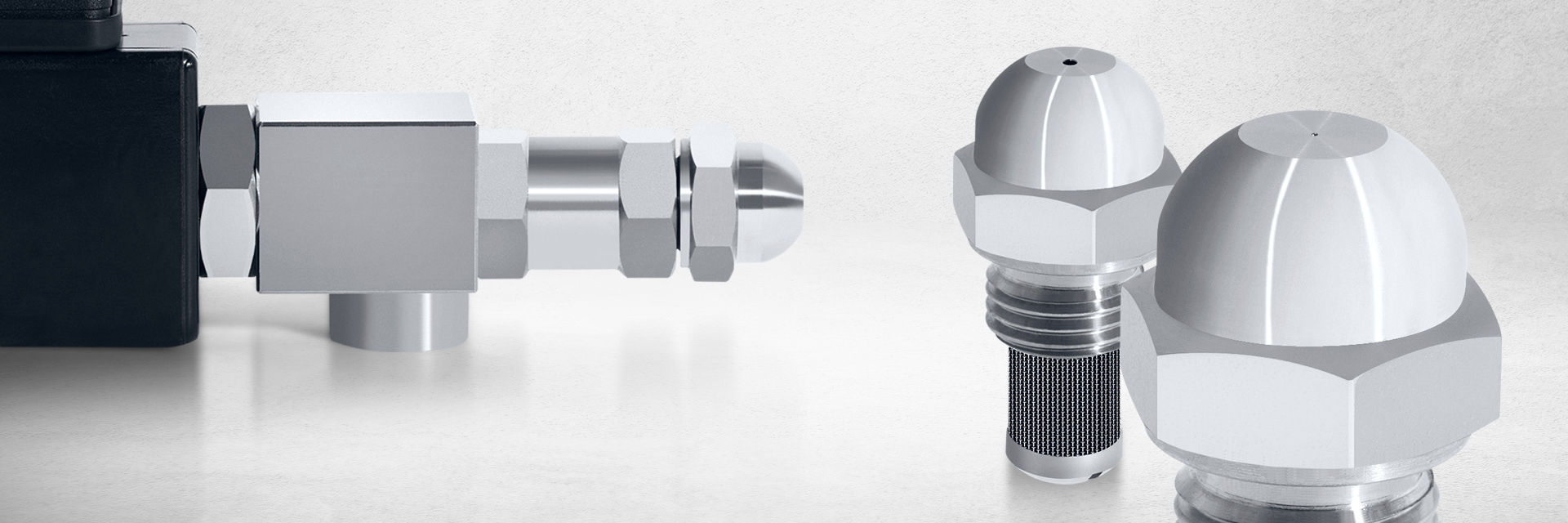
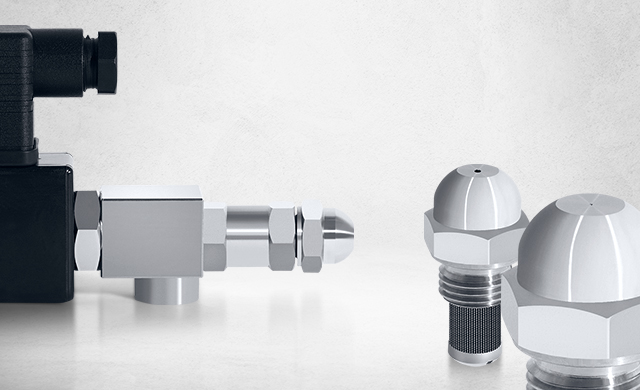
Spray pattern: circular hollow-cone
Spray angle: 15°, 30°, 45°, 60°, 78°, 90°, 120°
Orifices: 0.1 mm – 2.5 mm
Capacity: 0.014 – 3.4 l/min at 6 bar
Spray pattern: circular hollow-cone
Spray angle: 30°, 45°, 60°, 78°, 90°, 120°
Orifices: 0.5 mm – 3.2 mm
Capacity: 0.1 – 4 l/min at 3 bar
Kreisl-spray nozzles are three-part nozzles consisting of a nozzle head, swirl unit and a screw fitting. The liquid flows tangentially into a swirl chamber and thereby starts to rotate. The energy in the pressurised liquid is converted into rotational energy or kinetic energy. A rotating film of liquid forms around an air core and emerges through the hole as a hollow cone. At the exit of the nozzle the liquid film encounters the surrounding air in a reciprocal reaction and breaks-up into fine droplets. These move away from the nozzle in an axial and radial direction and form a hollow cone.
The quality of the atomised spray and the droplet spectrum are related to the diameter of the hole, the pressure, the scatter cone, the density, the viscosity, and the surface tension.
The normal spray cone is achieved by bore holes diameters of
0.1 – 0.5 mm approx. 60°
0.6 – 1.6 mm approx. 70°
1.7 – 2.5 mm approx. 78°
Custom spray cone with 15°, 30°, 45°, 60°, 90° and 120° available. With bore holes of 0.1 to 0.25 mm only normal spray cone available.
Materials: Acid-resistant stainless steel, heat-resistant stainless steel, brass, hastelloy, inconel, platinum-iridium, PP, PTFE, PVC, PVDF, RCH 1000, tantalum, titanium, other materials available on request.

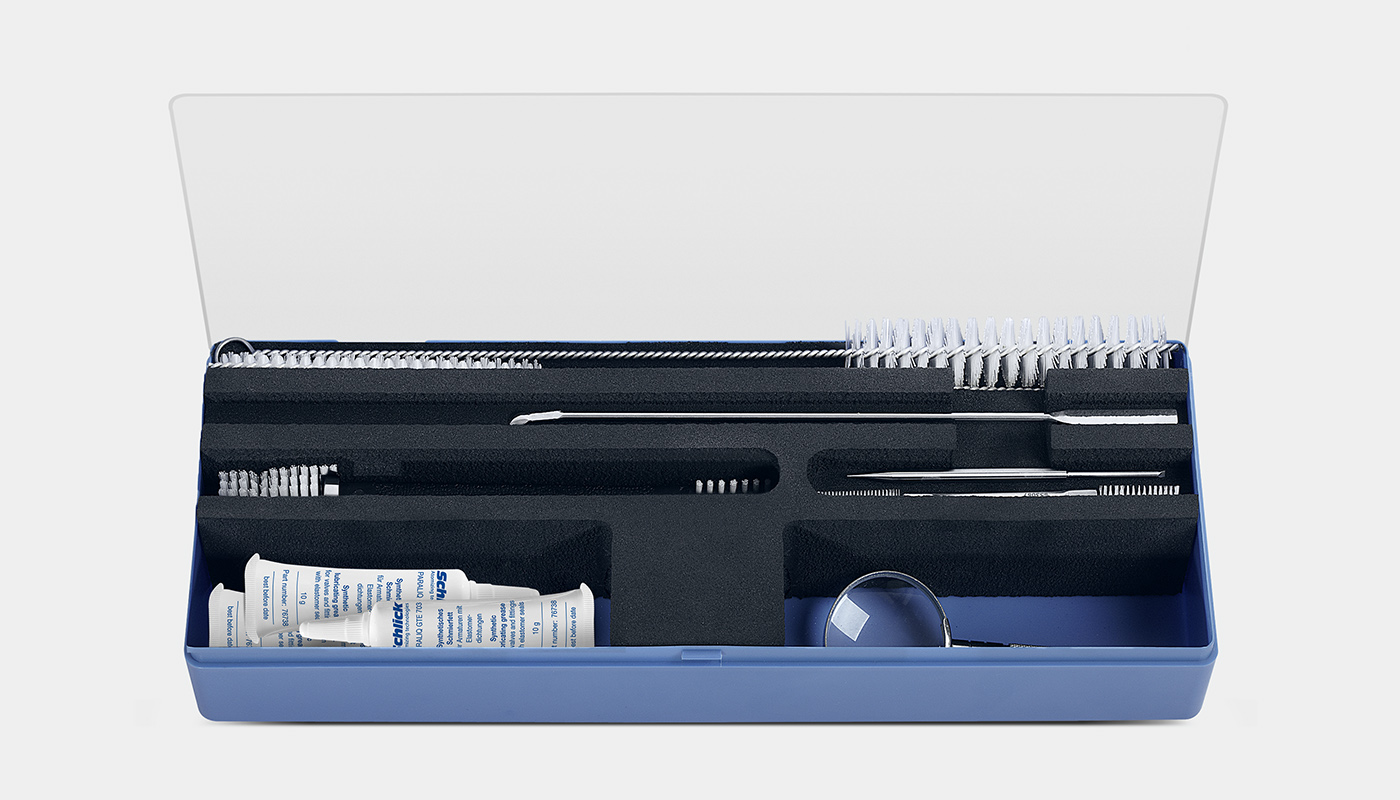
The SCHLICK cleaning set includes all necessary tools for preservation of nozzle parts
– 3 x brush (ø 8, 14 and 20 mm)
– 1 x double cylindric-brush
– 1 x o-ring-tool (stainless steel)
– 1 x spoon-spatula (stainless steel)
– 1 x thread-cleaningbrush
– 1 x magnifying glass
– 3 x synthetic lubricating grease
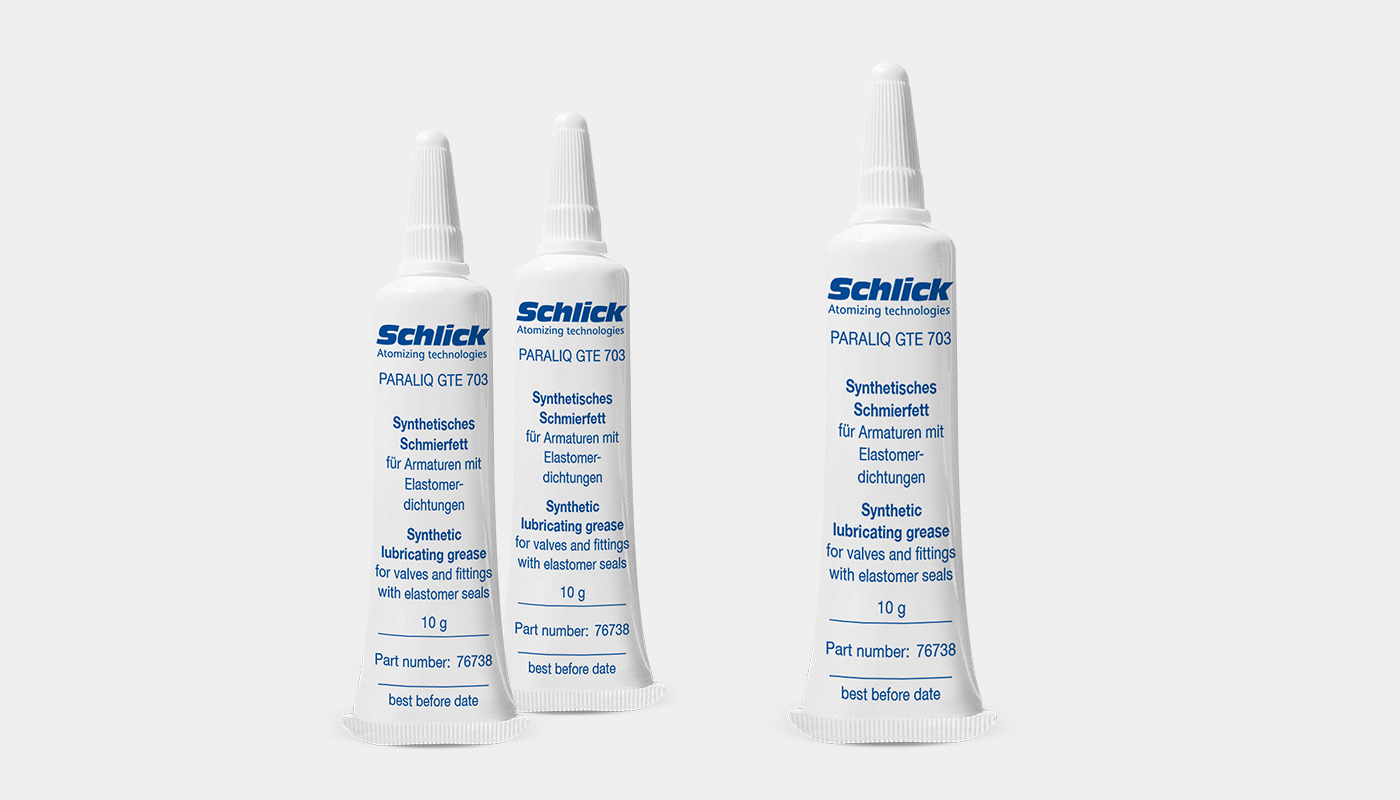
Synthetic lubricating grease
for valves and fittings with elastomer seals, compatible with EPDM and conforming to FDA. Can be dispensed in very small doses using special injection devices.


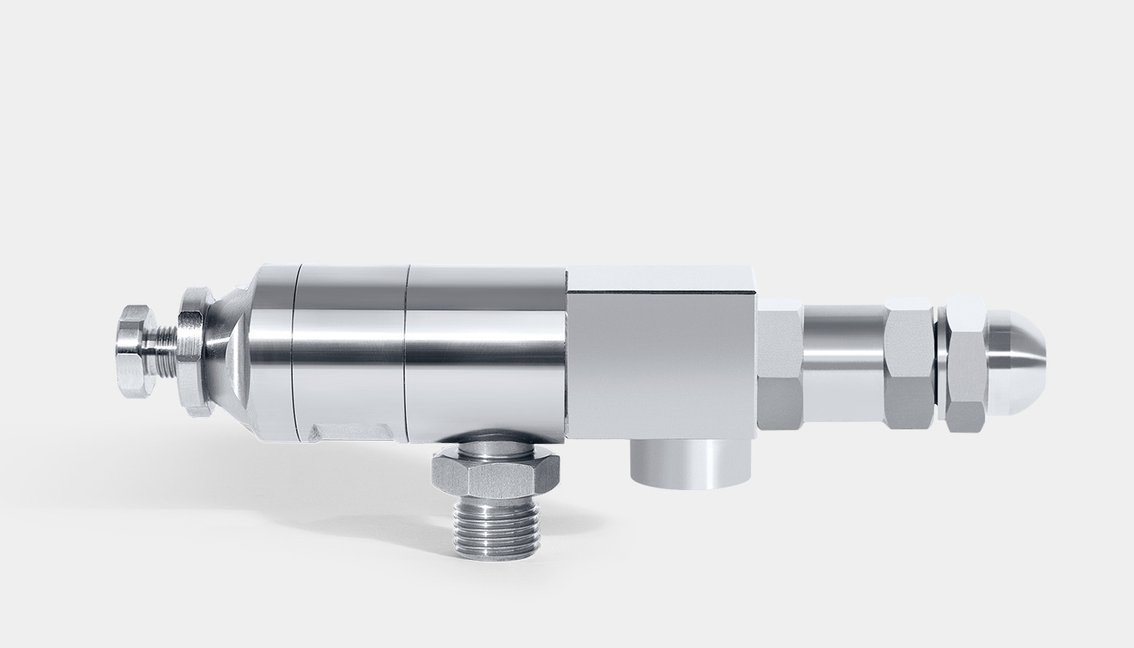
Model 121 V Form 7-1
With pneumatic open/close control using control air. The nozzle needle closes the outlet abruptly when the control air is shut off. Especially suitable for etching, marking, cyclic spraying and above all for liquids under pressure where drips are to be avoided.


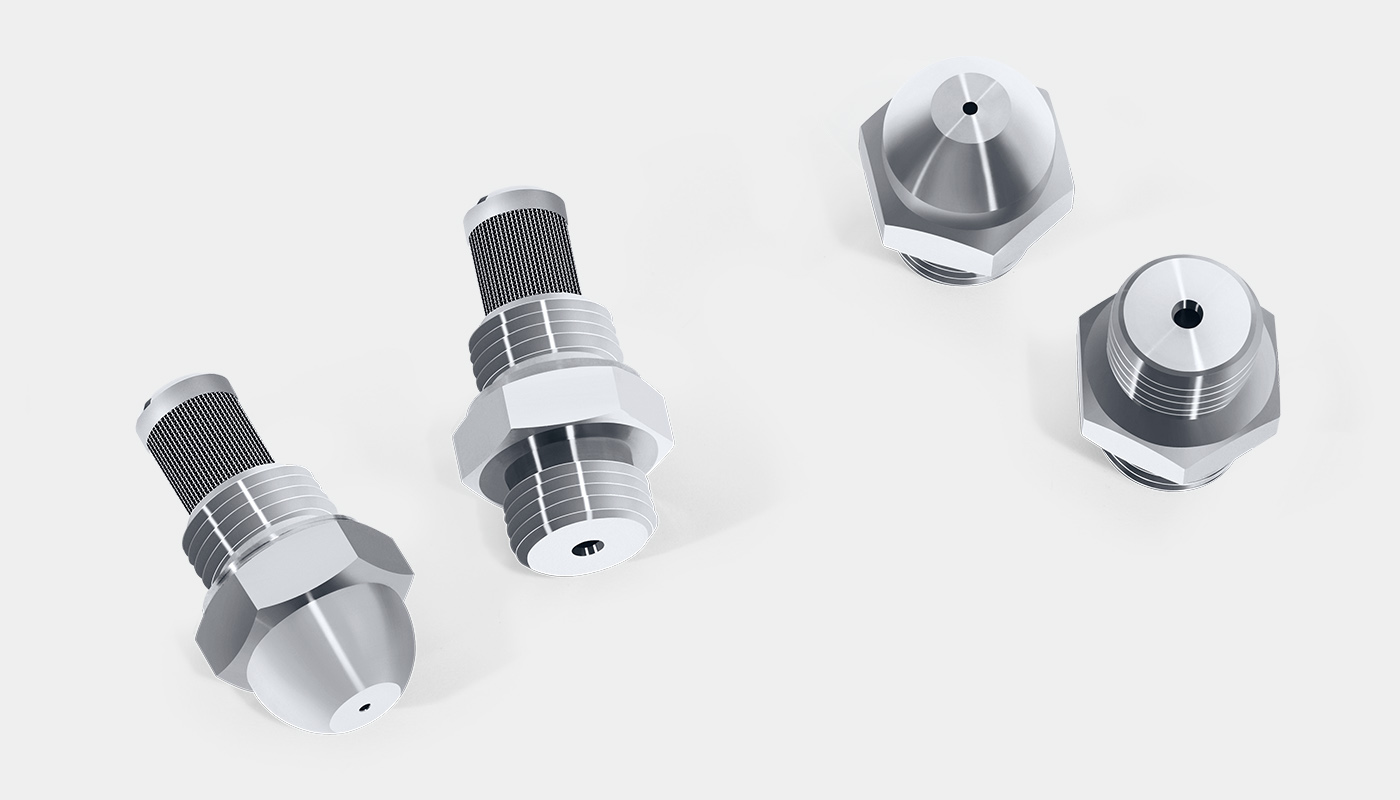
Kreisl-spray nozzles are available in different designs: fitted with filter in order to prevent blockages, with filter and head screw for perfect and uncomplicated fitting, without filter and without filter but with head screw.

Brochure "SCHLICK Technology – Overview"
The product overview shows all essential things at first glance


In a multitude of industrial fields, such as paper mills, glassworks, cement works, power plants, steel works, waste incineration, etc., cooling process gases in an economical and above all energy efficient way is becoming increasingly important. Evaporative cooling is the most effective way to cool and condition exhaust gases. By cooling the gases, a defined reduction in volume is achieved.
Read moreThe SNCR and SCR procedures were developed for flue gas denitrogenation in order to meet the strict air purification requirements. Injection lances for the defined insertion of the reducing agent are an important component of both processes. These differ in their structural and procedural design depending on the application.
Read moreDuring flue gas denitrogenation, the addition of a reducing agent is used to transform nitrogen oxides into a substance that can be emitted without causing any damage or can be used again. The reducing agent ammonia is increasingly being replaced by innocuous urea. However, urea has a tendency to crystallise during atomisation. When observing the nozzle systems used in urea atomisation, it can be seen that trouble-free operation is not always guaranteed.
Read moreDue to poor or incomplete combustion of the medium, soot is produced, and at the same time the emission values in the combustion chamber increase. With liquid fuels, combustion always takes place in the gas phase: The liquid fuel is first atomised, then vaporised, mixed with air, and finally burned in the gas phase. This article shows how atomisation can be influenced by various special nozzles.
Read moreDue to poor or incomplete combustion of the medium, soot is produced, and at the same time the emission values in the combustion chamber increase. With liquid fuels, combustion always takes place in the gas phase: The liquid fuel is first atomised, then vaporised, mixed with air, and finally burned in the gas phase. This article shows how atomisation can be influenced by various special nozzles ...
Read more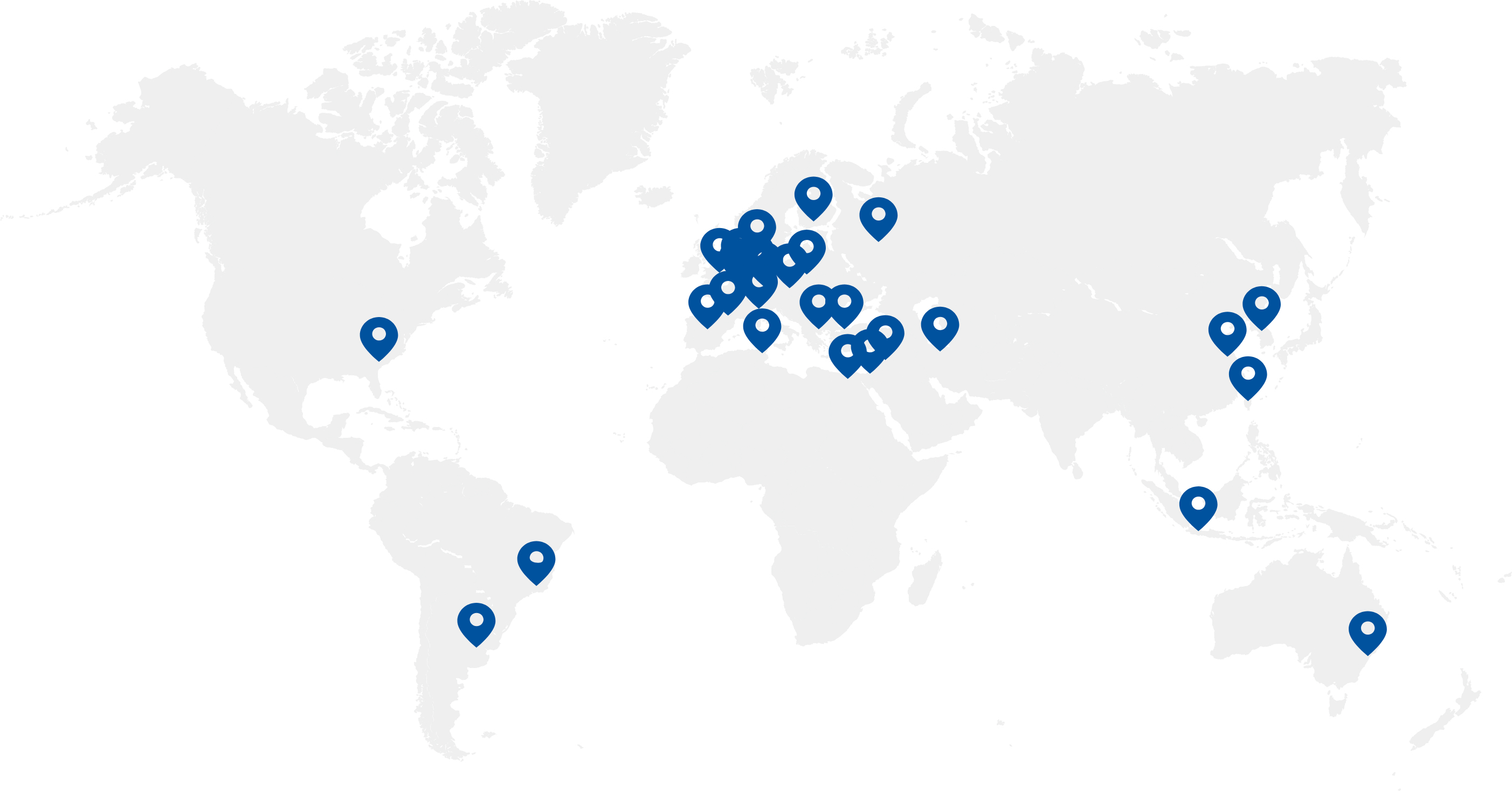
Consultation, engineering, production and testing.
At SCHLICK, you get everything from one source.
The ideal solution for your application.
Phone +49 9565 9481-0
Mail info(at)myschlick.com
Hutstraße 4 | 96253 Untersiemau/Coburg
Telefon: +49 9565 9481-0
Mail: info(at)myschlick.com

